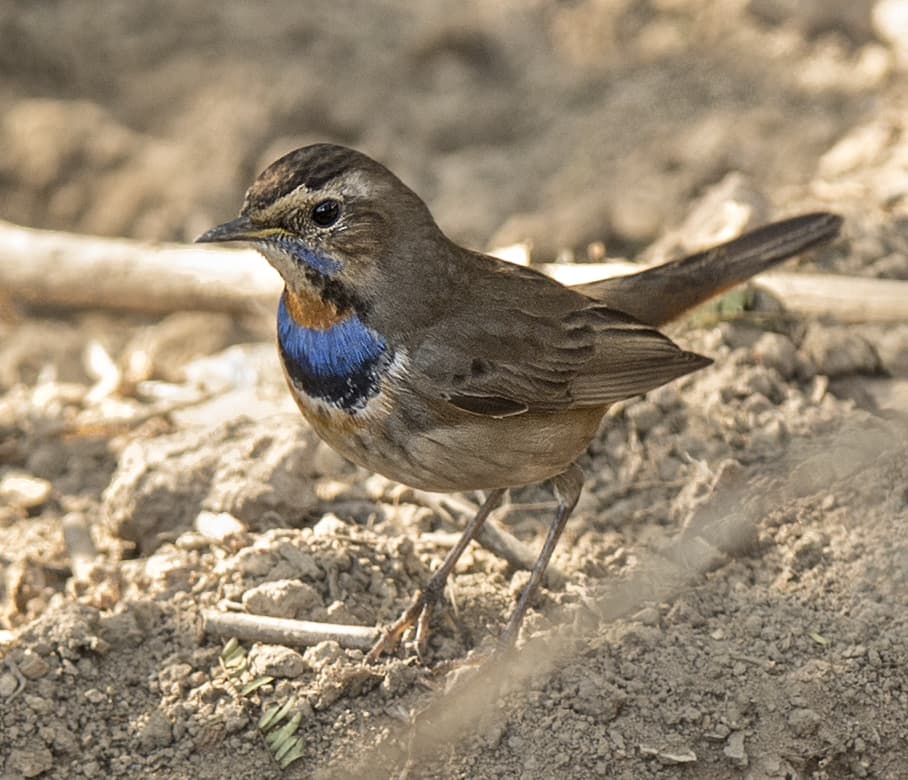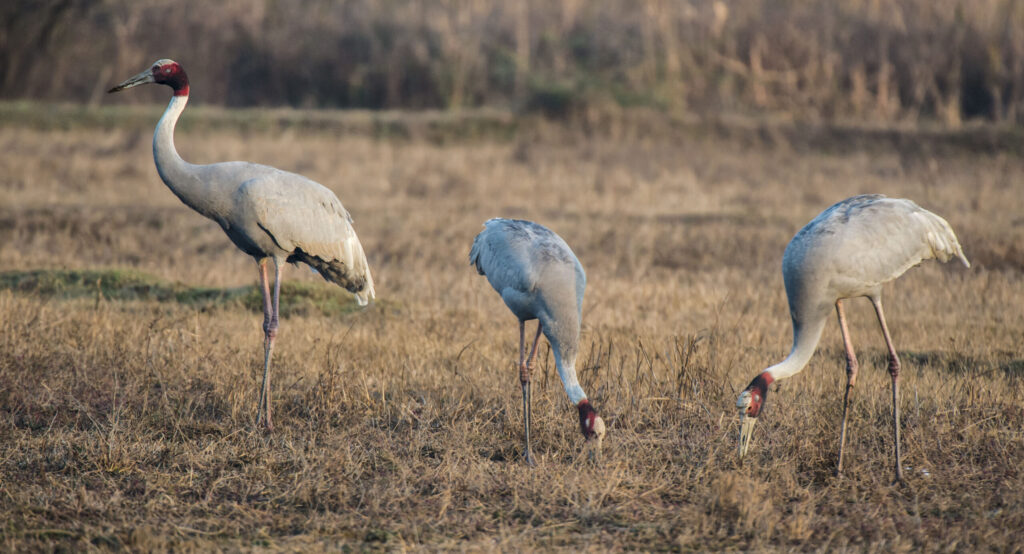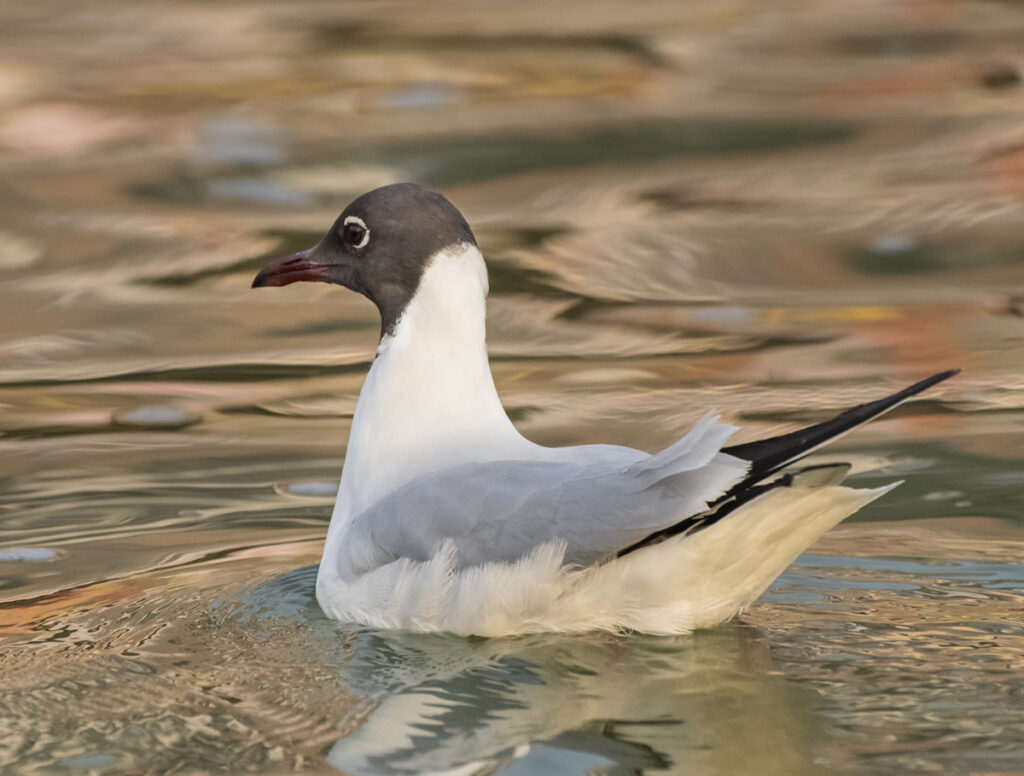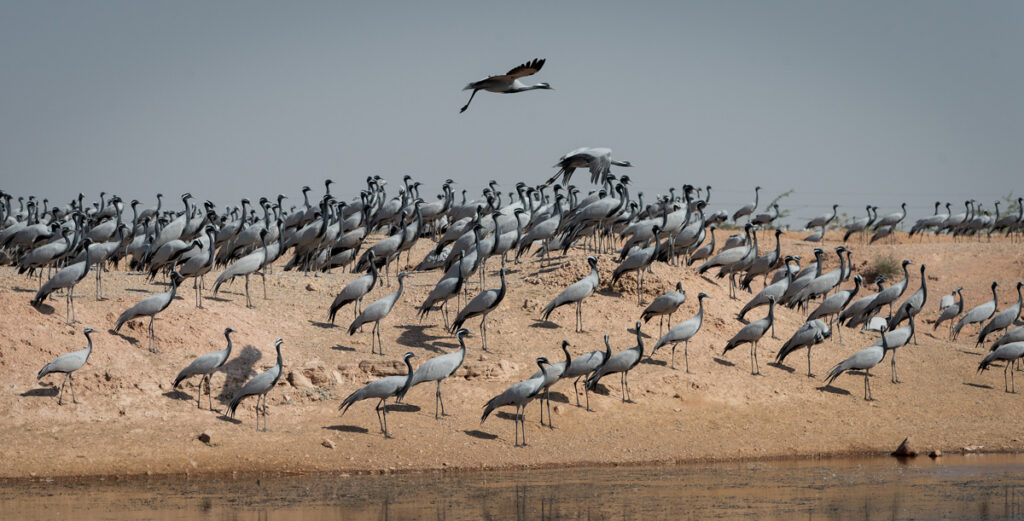
The routes that migratory birds usually travel along are referred to as flyways, and there are nine major flyways across the globe. One of those flyways received some much-needed commitment recently in February’s CMS COP14, marking a new era for bird conservation for over 600 bird species who use the route every year.

The Central Asian Flyway (CAF) may be the shortest of the global flyways, but the landscape it covers means a huge variety of birds use it, predominantly waterbirds. Comprising several important routes for waterbirds, it covers 30 countries stretching across Eurasia between the Arctic and Indian Oceans and sees hundreds of species of birds travel between their wintering grounds in West and South Asia to their northernmost breeding grounds in Siberia, even to the American continent. They cross freezing tundra and steppes, the cold deserts of Arabia, grasslands, wetlands, boreal forests, the open waters of the Indian Ocean, and even the awe-inspiring Himalayan mountain chain.
However, monitoring and studies carried out over the past few years have shown a troubling decline of around 250 species that use the CAF, and 48 of those are now listed as Threatened or Near Threatened by the IUCN, such as the Sarus Crane, photographed by Owen on a trip to India in 2015 and shown below.

The 14th meeting of the United Nations Convention on Migratory Species — CMS COP14 — took place in md-February 2024 in Samarkand, Uzbekistan, an ancient city located on the Silk Road between China and Europe that has been populated since the 8th Century BCE. The city’s cultural and geographic position in the world was the perfect choice for an event concerning the passage of millions of birds and other animals, encapsulated within the slogan: “Nature Knows No Borders”.
It was here that a historic meeting took place, when the Government of India, BirdLife International and numerous other organizations and governments from other countries along the flyway signed up to the Initiative for the CAF, committing funds, knowledge-sharing, research and coordination between all parties with the single view of conserving the 600 plus species of birds who use the ancient route. Martin Harper, the CEO of BirdLife International, summed up the achievement of the event when he commented: “We need governments to show continued leadership for nature. Spearheaded by India, the 30 countries of the Central Asian Flyway have done exactly that at CMS COP14 by agreeing to collaborate inclusively across this critical flyway … and deliver action on the ground with local communities for threatened species and their habitats.”
Though meek-looking and relatively small compared to other gulls, the Brown-headed gull is one such species whose numbers have been falling fast, and that this Initiative hopes to restore. They are very noisy when in gregarious colonies and rely on large reedbeds and marshes, nesting on the ground. This particular habitat has been hard-hit by drainage for agriculture as well as development of energy infrastructure as the human population expands.

Owen’s trip also took in one of the first Bird Sanctuaries established for migrating Demoiselle Cranes, beautiful, elegant birds that migrate along the CAF between their breeding grounds in Tibet, Mongolia, and China to spend the winter in India. The sanctuary was actually started by one man in the 1970s and is now the preferred wintering ground for upwards of 15,000 of these stunning birds.

Other species of gulls, cranes, eagles, skimmers, flamingos, rails, plovers, stilts, storks, and hundreds of songbird species (like the Bluethroat, pictured below, a bird that breeds in western Alaska and Canada and winters in Southeast China, a whopping 6000km flight) all stand to benefit from this historic decision, as the organizations recognize that it is not enough just to preserve and conserve the breeding grounds and the wintering grounds, the tail ends of the journey. Through science and research, so much more is known about the land that the CAF encompasses, and to help the birds survive the most arduous journey of their lives time and time again, they must be protected on the journey as well, ensuring safe passage with places to rest free from danger – pollution, hunting, poaching, electrocution — and make sure there is plenty of food to eat and water to drink at every one of those places so that much-needed energy is restored for onward travel.


